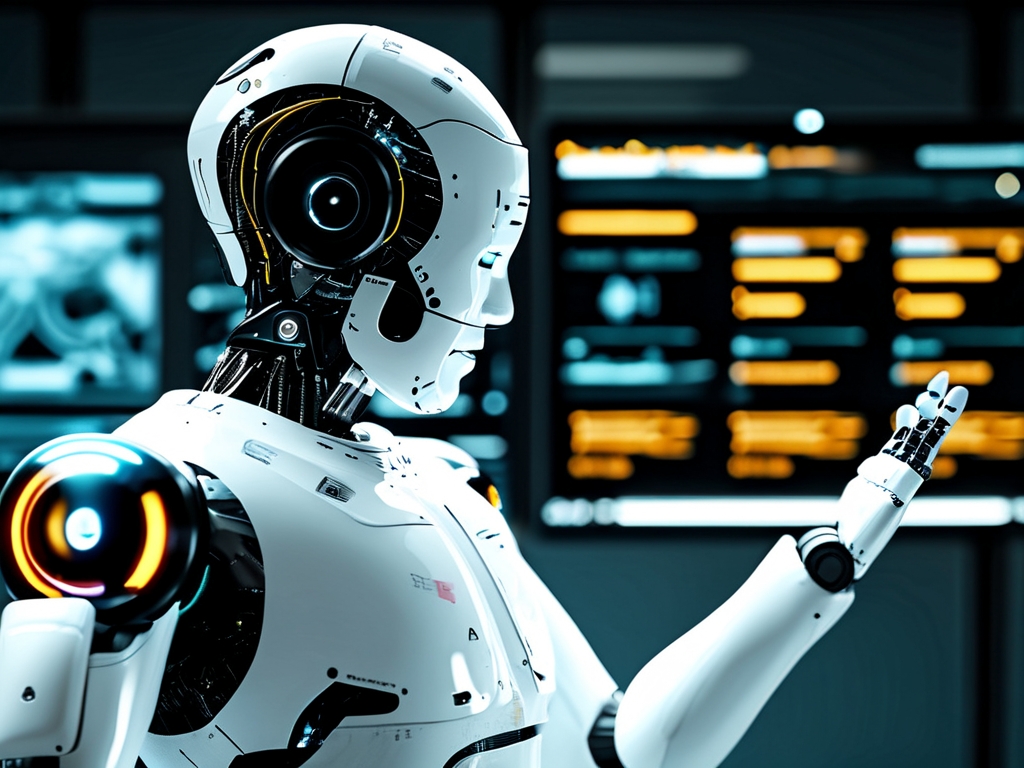The integration of artificial intelligence (AI) and robotics into healthcare is no longer a futuristic concept—it is a transformative reality. From precision surgeries to personalized patient care, AI-driven medical robots are redefining the boundaries of modern medicine. This article explores the advancements, applications, and ethical implications of AI robotics in healthcare, shedding light on its potential to save lives, reduce costs, and democratize access to quality treatment.

1. The Rise of AI Robotics in Medicine
AI-powered robotics combines machine learning algorithms, sensor technology, and mechanical precision to perform tasks traditionally reliant on human expertise. Unlike conventional robots, these systems “learn” from vast datasets, adapt to dynamic environments, and improve over time. For instance, the da Vinci Surgical System, a pioneer in robotic-assisted surgery, enables surgeons to operate with enhanced dexterity and 3D visualization. Today, next-gen AI robots go beyond assisting humans—they autonomously diagnose diseases, recommend treatments, and even predict patient outcomes.
2. Key Applications of AI Medical Robots
Surgical Precision and Minimally Invasive Procedures
Robotic surgery has drastically reduced human error in complex operations. AI algorithms analyze preoperative scans to create personalized surgical plans, while robotic arms execute incisions with sub-millimeter accuracy. For example, the Smart Tissue Autonomous Robot (STAR) successfully sutured tissues in live animal trials without human intervention. Such innovations minimize recovery times, lower infection risks, and improve success rates in cardiac, neurological, and oncological surgeries.
Diagnostics and Early Disease Detection
AI robots excel at processing medical imaging data. Google’s DeepMind AI, for instance, detects diabetic retinopathy and age-related macular degeneration from retinal scans with 94% accuracy—surpassing human specialists. Similarly, IBM Watson analyzes genetic data and medical histories to identify cancer markers years before symptoms manifest. These tools empower clinicians to intervene earlier, dramatically improving prognosis.
Rehabilitation and Elderly Care
Robotic exoskeletons like HAL (Hybrid Assistive Limb) help stroke patients regain mobility by interpreting neural signals and assisting movements. Socially assistive robots, such as PARO the therapeutic seal, provide companionship and cognitive stimulation for dementia patients, reducing reliance on overburdened healthcare staff.
Drug Discovery and Clinical Trials
AI accelerates drug development by simulating molecular interactions and predicting compound efficacy. In 2020, an AI system designed by Insilico Medicine identified a novel drug candidate for fibrosis in just 46 days—a process that typically takes years. Robots also automate lab workflows, enabling high-throughput screening of potential treatments.
3. Advantages Over Traditional Methods
- Enhanced Accuracy: AI robots reduce diagnostic errors, which account for 10% of patient deaths annually (Johns Hopkins study).
- 24/7 Availability: Unlike humans, robots don’t fatigue, ensuring consistent care in ICUs and emergency settings.
- Cost Efficiency: While initial investments are high, robots lower long-term expenses by shortening hospital stays and optimizing resource allocation.
- Global Reach: Teleoperated robots enable specialists to treat patients in remote areas via 5G networks, bridging urban-rural healthcare gaps.
4. Ethical and Practical Challenges
Despite its promise, AI robotics faces significant hurdles:
- Data Privacy: Training AI requires massive patient datasets, raising concerns about misuse and breaches.
- Accountability: Who is liable if an autonomous robot makes a fatal error—the developer, hospital, or algorithm itself?
- Workforce Displacement: Over 40% of healthcare tasks could be automated by 2030 (McKinsey), necessitating reskilling programs for medical staff.
- Bias in Algorithms: AI models trained on non-diverse data may overlook symptoms in underrepresented populations, exacerbating health disparities.
5. The Road Ahead: Opportunities and Innovations
Future advancements may include nanorobots that deliver drugs directly to cancer cells, AI-powered “digital twins” for personalized treatment simulations, and brain-computer interfaces restoring function to paralyzed patients. Collaboration between governments, tech firms, and medical institutions will be critical to establish regulatory frameworks and ensure equitable access.
AI robotics is not a replacement for human compassion but a tool to amplify it. By handling repetitive tasks and augmenting decision-making, these technologies free healthcare professionals to focus on what truly matters: patient relationships. As we navigate this revolution, balancing innovation with ethics will determine whether AI becomes humanity’s greatest ally—or its unintended adversary—in the quest for better health.

